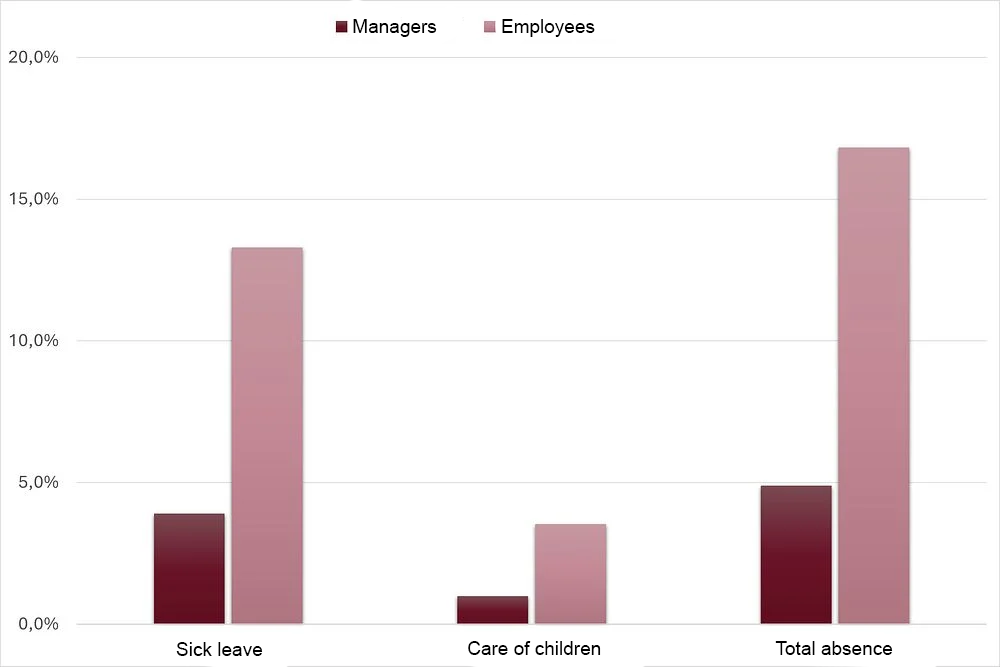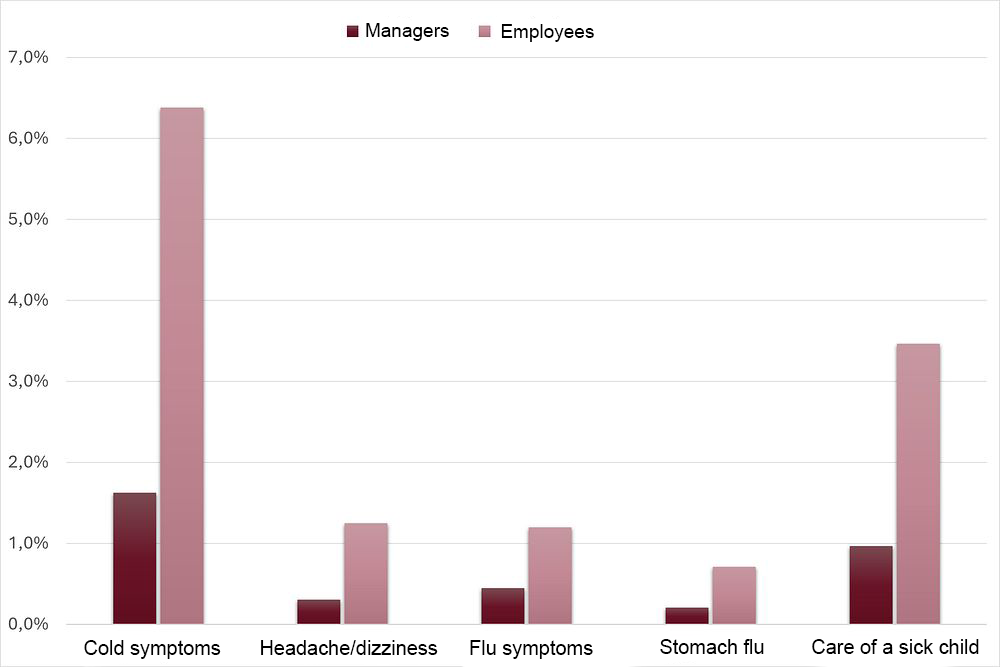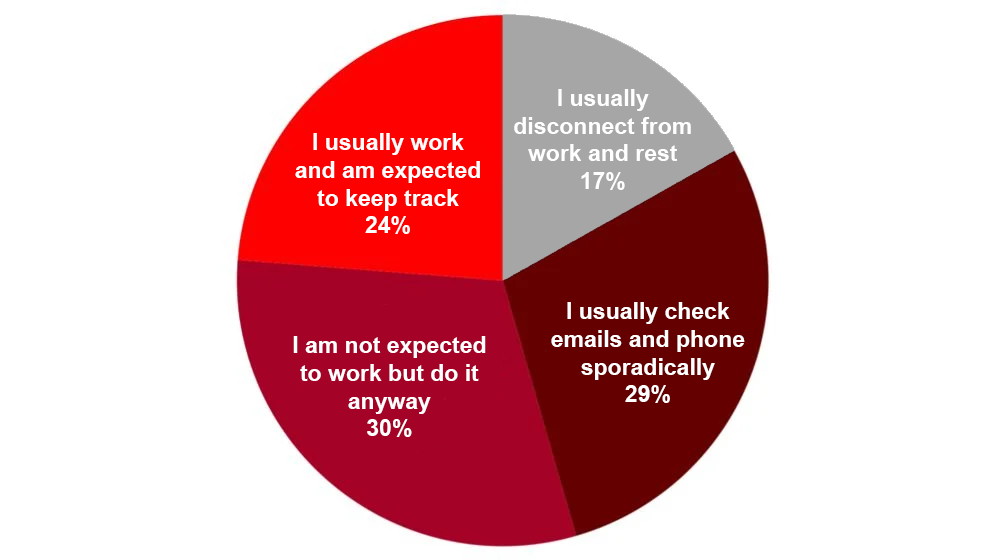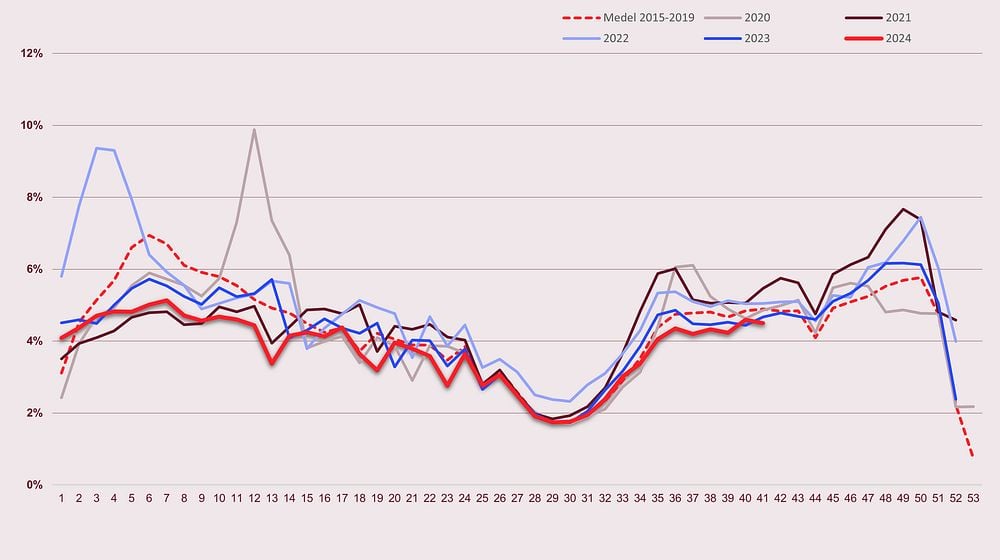Press release
Large differences in sick leave rates between managers and employees
October 21, 2024: Managers have significantly lower sick leave rates than employees. This is shown by recent figures from Falck Sjuk & Frisk, the most comprehensive and up-to-date tool for analyzing absence statistics in Sweden. At the same time, many managers report that they work even when they are sick.
The difference in absence rates between managers and employees is significant. An in-depth look at short-term absences during the month of September shows that just over 13 percent of all employees were on short-term sick leave at some point. The corresponding figure for managers was only four percent.
There are also large differences between managers and employees when it comes to caring for children. Just under four percent of employees were at home caring for children at some point during September, while only about one percent of managers were.

"Managers often have trust-based working hours, and we can see a connection between trust-based working hours and working from home. These figures confirm the hypothesis that managers more often work when they are sick and the image of the manager as constantly available and connected," says Lena-Karin Allinger, psychologist and organizational consultant at Falck.
The statistics come from Falck's service Sick and Healthy, which covers 148,000 employees, including 12,000 managers, at 420 companies and public organizations across Sweden and refer to new instances of sick leave and care of children regardless of industry. Sick leave, care of children, and health notifications are made via phone or online and include medical advice and follow-up on sick leave.
The five most common reasons for absence in the past month are cold symptoms, care of children, headache/dizziness, flu symptoms, and stomach issues. Within each category of reasons, there are also significant differences between managers and employees in the proportion who have been absent for each reason.

To deepen the understanding of the large differences between managers and employees regarding sick leave, Falck has asked a survey question to Sweden's managers about whether they usually work when they are sick. Just over 100 managers have responded to the survey, and in the responses, more than half of the managers state that they actively work even when they are sick. An additional 29 percent keep an eye on emails and phone sporadically. Only 17 percent of the managers state that they completely disconnect from work when they are sick.

"Research shows that the work environment of managers is often overlooked. We know that many managers experience a high workload and a lack of support and relief. Being constantly present and connected has health consequences, whether we are employees or managers. There is every reason to raise questions about the work environment of managers," says Lena-Karin Allinger.
Overall relatively low sick leave rates at the start of autumn
Overall, the autumn of 2024 has started with relatively low sick leave rates, with sick leave just below last year's levels. Usually, there is a sharp increase in sick leave around the start of the school year. That did not occur this year. Instead, sick leave has somewhat increased at the beginning of October.
"Likely, the increased possibility and acceptance of working from home for many professional groups contribute to generally lower sick leave than in previous years. It is positive to have this flexibility, but the risk is that it invites working even when one is sick and should take it easier and recover," says Maria Steneskog Nyman, psychologist and head of Falck's Sick and Healthy service.

"Of course, there are likely several factors influencing this changed pattern. A significant factor is that we have had quite a nice summer this year, extending into September, which generally leads to us feeling better and being healthier than if we were met with a gloomier start to autumn," says Maria Steneskog Nyman.
About Falck
With 1,000 experts at nearly 100 units across the country, Falck is Sweden's most comprehensive provider of health and work life services. We offer occupational health care, crisis and employee support, transition and career services, as well as primary care and health services for individuals. Our health and work life services reach 1.2 million people across Sweden and contribute to a sustainable work and private life for everyone.
Sweden's largest occupational health service, Previa, has been part of the Falck group since 2014. In January 2023, Previa completely ceased as a name and brand, and the former Previa now operates entirely under the Falck brand.
For more information, please contact
Sandra Ahlstrand, Communications Specialist, +46 (0)70 635 89 62, sandra.ahlstrand@falcksverige.se
Peter Skald, Head of Communications, +46 (0)70 413 0813, peter.skald@falcksverige.se